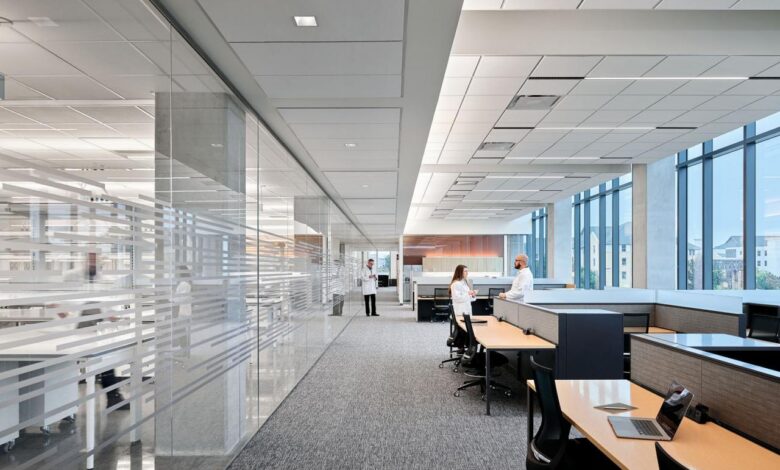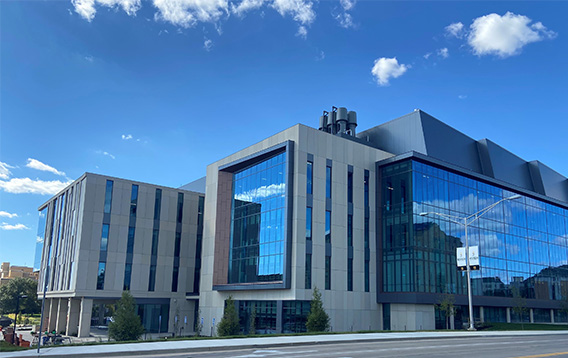Next-Gen Building Materials Create Adaptable Ecosystems

The world of architecture and construction is on the cusp of a profound transformation, moving beyond traditional aesthetics to embrace a new era of innovation and sustainability. In an age of climate change, resource scarcity, and a growing demand for durable and resilient structures, the materials we use to build are no longer static. Next-gen building materials are a profound paradigm shift, a creative fusion of advanced science, engineering, and a new understanding of a building as a dynamic, intelligent, and adaptable ecosystem. This isn’t just about a niche trend for a few eco-conscious architects; it’s a fundamental revolution that is reshaping how we design, build, and inhabit our living and working spaces. This article will take a deep dive into the core concepts of next-gen building materials, exploring the pivotal role of smart composites, the power of bio-based materials, the integration of self-healing technology, and the immense opportunities and challenges that lie ahead for a more sustainable, resilient, and human-centric future.
A Foundation for Resilience

The new era of construction is powered by a new generation of advanced materials that are more durable, more sustainable, and more energy-efficient than the traditional ones. These materials are a direct response to the challenges of tomorrow, from extreme weather events and natural disasters to a rapidly changing climate.
A. The Power of Smart and Adaptive Materials
The future of building is defined by the use of smart and adaptive materials that can respond to the environment. These materials are embedded with sensors and other technologies that allow them to monitor and adapt to their surroundings.
- Phase Change Materials (PCMs): PCMs are a class of materials that can absorb and release heat. They can be integrated into a building’s walls and roof to absorb heat during the day and release it at night, which can dramatically reduce the amount of energy needed for heating and cooling. This is a game-changer for a net-zero building.
- Electrochromic Glass: Electrochromic glass, or “smart glass,” can change its transparency with the flip of a switch or with a sensor that can monitor the amount of sunlight. This can reduce the amount of heat and light that enters a building, which can reduce the need for energy-intensive air conditioning.
- Self-Healing Concrete: Concrete is the most widely used building material in the world, but it is also a major source of carbon emissions. A new generation of concrete is being developed with the ability to self-repair. This includes concrete that is embedded with a a certain type of bacteria that can produce calcium carbonate to fill cracks. This can significantly reduce maintenance costs and extend the lifespan of a building.
By using these advanced materials, architects and builders can design a building that is not only more beautiful but also more resilient, more durable, and more sustainable.
B. Bio-Based Building Materials
The traditional building materials, such as concrete and steel, have a massive carbon footprint. The new era of building is a return to a more natural and sustainable approach, with a new focus on bio-based materials.
- Cross-Laminated Timber (CLT): CLT is a new and powerful building material that is made from layers of wood that are glued together in a crosswise pattern. It is incredibly strong, durable, and more fire-resistant than steel. It is also a sustainable and renewable resource, making it a key component of a green and resilient building.
- Mycelium and Mushroom-Based Materials: A new wave of materials is being developed from natural sources, such as mycelium (a mushroom-based material). Mycelium can be grown in a mold and then dried to create a lightweight, durable, and fire-resistant material that can be used for insulation or for a building’s facade. It is also a compostable and sustainable material.
- Hempcrete: Hempcrete is a mixture of hemp and lime that is a natural, sustainable, and energy-efficient alternative to concrete. It is incredibly lightweight, durable, and fire-resistant. It can be used for a building’s walls and insulation, which can dramatically reduce a building’s carbon footprint.
A Fusion of Old and New
The new era of next-gen building materials is a masterclass in innovative architecture. It is a creative fusion of traditional building techniques and cutting-edge science, creating a new urban aesthetic that is both beautiful and sustainable.
A. The Power of Modular and Prefabricated Construction
The use of modular and prefabricated components is a new and powerful trend in next-gen building. A building can be built in a factory with a high degree of precision and then assembled on-site in a matter of days. This has a number of powerful advantages.
- Speed and Efficiency: A modular home can be built in a fraction of the time it takes to build a traditional home. The construction process is not affected by weather delays or a lack of skilled labor on-site. The modules are built with a high degree of precision and quality control, and they can be assembled on-site in a matter of days or even hours.
- Cost-Effectiveness and Affordability: The factory-based approach allows for a new level of cost control and a significant reduction in material waste. The efficiency of the process, combined with the economies of scale, allows for a more affordable and accessible path to homeownership.
- Quality and Durability: Modular homes are built in a climate-controlled factory with a high degree of precision and quality control. They are also built to a higher standard of durability, as they must be able to withstand the rigors of transportation. The end result is a home that is more energy-efficient, more resilient, and more durable than a traditional one.
B. The Zero-Carbon Footprint
A building that is built with next-gen materials is also a net-zero building, a building that produces as much energy as it consumes. This is a crucial step toward a more sustainable and environmentally conscious future.
- Solar Power and Battery Storage: The use of solar panels and a building-scale battery storage system is a key component of a net-zero building. The solar panels can generate a continuous stream of clean energy, and the battery storage system can store the excess energy for use at night or on a cloudy day.
- Smart Grids and Energy Management: A resilient building is a smart building, and a smart building is a part of a larger smart grid. The building’s energy management system can communicate with the grid, using the excess energy from the solar panels to power the building or to sell the energy back to the grid. This can reduce the building’s energy bill and its carbon footprint.
- Geothermal and Passive Design: The use of geothermal heating and cooling systems and a passive design, which takes advantage of a building’s natural light and temperature, is a new and powerful trend in resilient building. This can reduce a building’s energy consumption by a significant margin.
Challenges and Opportunities

While the future of next-gen building materials is bright, there are significant challenges that must be addressed to ensure that this revolution is inclusive and sustainable.
A. The Cost of Implementation
The cost of a building with next-gen materials, particularly a net-zero building with a large solar panel system and a battery storage system, can be prohibitive. The components that power these buildings are expensive, creating a new digital divide between those who can afford a high-end building and those who cannot. The use of modular and prefabricated components is a major step toward addressing this, but more work is needed to make a resilient building accessible to everyone.
B. The Evolving Legal and Regulatory Framework
The new era of next-gen building materials is advancing faster than the laws that govern it. New regulations are urgently needed to address a wide range of issues, from the legal status of a building’s energy production to the rights of a building’s occupants. The lack of a clear regulatory environment is a major barrier to adoption for many developers and cities.
C. The Human Element
A building is, at its core, a place for people. While technology can solve many problems, it cannot replace the human element of empathy, community, and social connection. The challenge is to use technology to enhance human interaction, not to replace it. Urban planning must be human-centric, creating spaces that foster community and belonging.
Conclusion
Next-gen building materials are not a passing trend but a powerful and transformative movement that is fundamentally reshaping our relationship with our built environment and with the planet. It is a testament to a new understanding that a building can be more than just a shelter; it can be an active participant in a sustainable ecosystem, producing its own energy, minimizing its carbon footprint, and providing a healthy and comfortable space for its occupants. The creative fusion of advanced science and innovative design is a new form of artistry, and it is creating a new urban aesthetic that is both beautiful and sustainable.
However, as we embrace this new era, we must also confront the significant challenges that lie ahead. The high cost of a resilient building, the need for a new legal and regulatory framework, and the challenges of data privacy and security are all hurdles that must be addressed proactively. The future of building is a journey that will be defined not just by its technological prowess but by its ability to create a world that is more connected, more human-centric, and more conducive to a person’s overall well-being. The next-gen building is here, and it promises to build a future where our buildings are as healthy and as happy as we are.
